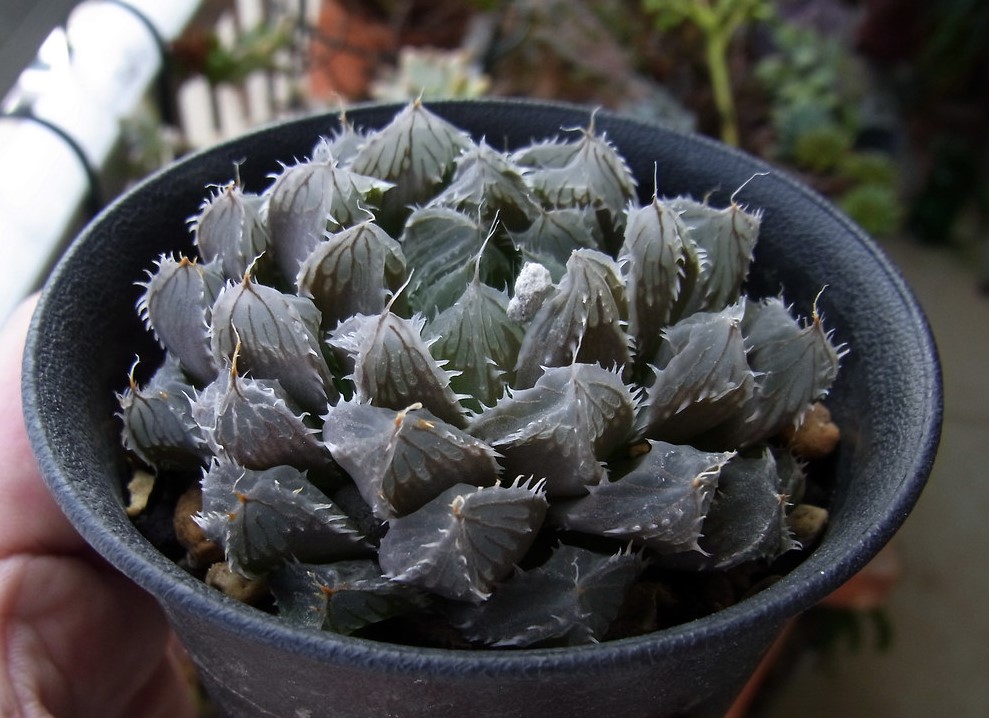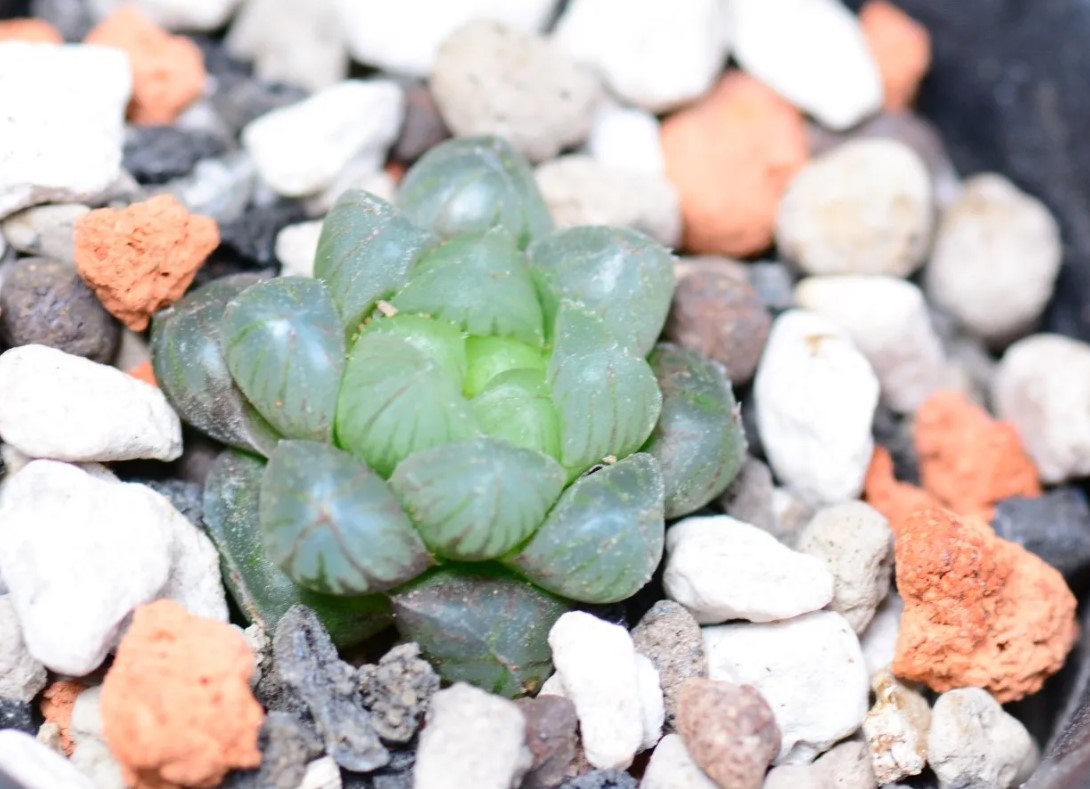Lots of little plants called Haworthia. Sixty kinds. All come from southern Africa. These plants look nice. Short leaves grouped together in rosettes. Subtle charm. People like to grow them inside. Easy to care for. Interesting shapes. Good for glass boxes with plants.
These plants are in the Asphodelaceae group. Live in South Africa mainly. Most from the Cape Provinces. Hot dry areas. Natural homes are rocky hills or deserts or grasslands.
Over time the plants changed to live with little water. Thick strong leaves to store water. Drought won’t kill them. Leaves also give shade from harsh sun. Some leaves let light come through like window glass.
So the Haworthia plants do well inside. Don’t need much care. Leaves feel good to touch. We can appreciate the nice shapes and colors. Watch them grow slowly in simple pots.
Key Takeaway
- These plants need good light, but filtered. Near a window facing south or west is best. Bright but no harsh hot sun. Around 4-6 hours per day. More will hurt them.
- When you move them, go slow. Over 2-3 weeks let them get used to the new bright place gradually. Watch the leaves for signs of stress. Colors changing.
- Don’t put them where sun shines on them directly. Burns and dries the leaves. Leaves can scar. Filter the light with curtains or other things that give shade.
- Near a light wall can make the light stronger. Foil will reflect more light if there’s not enough.
- Spin the plants gently to give all sides a turn. Each part should get some bright filtered light every few days.
- Check on them. See how the leaves look. Move to a better light place if the plant seems weak or if leaves show too much sun. Adapt until you find the amount that keeps them happy.
An Overview of Their Lighting Needs
Haworthias look like cacti but need different light. Bright, indirect is best. Hot sun hurts them. Burns the leaves. Yellowing then death. Too little light also bad. Plants stretch tall, weak. Trying to reach for sun. Get ugly.
Important to use right light. Keeps the plants strong and nice colors. Not too much, not too little. Let’s talk how to give them what they need.
Providing the Right Light for Haworthias
Light is tricky with these plants. Too much burns them. Too little stretches them out, ugly. Takes trying to get it right.
Bright, indirect sun is best
The plants like strong but filtered sun. 4-6 hours daily is good. Bright enough to grow well.
But it must be filtered. Even some short direct sun burns. Scorch marks happen. Yellow leaves. Dry brown.
Put them near south or west windows. Filtered sun comes through. Can also shade with curtains. Goal is bright, diffused light. No harsh beams.

Signs of Insufficient Light Levels
If a Haworthia plant isn’t getting enough sunlight, you’ll notice some clear signals:
Leaves turn solid green and elongated
Growth becomes weak and droopy
Very few new pups or offshoots emerge
This leggy, feeble growth shows that the plant is desperate for more light. Extending the leaves upward allows it to catch more sun rays to power growth and photosynthesis.
Signs of Excessive Light
On the flip side, too much direct sun leads to the opposite issues:
Leaves turn brown, red, or black
Crispy, dried leaves
Sunburn scars and marks on leaves
This damage indicates that the delicate leaves got overheated under intense light. The leaf tissue literally cooks under the sun’s UV rays.
Adjusting the light levels appropriately will keep your Haworthia compact and vibrant. Monitor your plant’s growth and leaf color to gauge whether the lighting needs adjustment.
Finding the Perfect Home for Haworthias
To grow Haworthia plants indoors, choose a good spot with enough sunlight. While direct sun will burn the leaves, ambient indoor light is often too dim. The right spot strikes a balance between bright indirect light and no harsh direct beams.
Near Bright, Indirect Light Sources
Ideally, place Haworthias near bright but filtered light sources around your home. Some good options:
South or west-facing windows – These provide intense light but the glass helps filter direct rays. Use sheer curtains for extra diffusion.
Shaded outdoor spots – A covered porch or patio works well. Dappled shade under trees is also suitable, as long as no direct sun reaches the plants.
Under skylights or shade sails – Open-roofed structures allow bright ambient light to reach the succulents. Adjust moveable shades to control intensity.
Haworthias thrive in places with filtered light. They need 4-6 hours of bright, indirect illumination each day. Monitor the plants and make adjustments if leaves show signs of sun stress.
Avoid Direct Sunlight
While they need ample light, direct sun beams will certainly scorch Haworthia leaves. Take steps to keep them shielded:
Use sheer curtains on sunny windows – These not only filter but also diffuse harsh sunlight. Opt for lightweight, white curtains to maximize ambient brightness.
Move plants as sunlight shifts – Track the movement of sun rays and reposition plants accordingly. This prevents prolonged exposure.
Keep away from unobstructed windows – Don’t place Haworthias on a windowsill with no covering. The direct sunlight will damage the leaves.
Supplement with Grow Lights
If ambient light in your home still doesn’t meet a Haworthia’s needs, provide supplemental lighting with grow lights. LED grow lights are energy-efficient and long-lasting. Position the lights 6-12 inches above the plants. Keep them on for 12-14 hours daily. Combine natural and artificial light to get the right intensity and duration. Create the perfect sun-kissed home for your Haworthias with careful placement and extra lighting.
Transitioning to Brighter Light
When moving a Haworthia plant to a sunnier location, it’s crucial to gradually acclimate it to avoid sun damage. A sudden increase in light intensity will shock the plant and scorch its tender leaves.
Slowly Ramp Up Light Exposure
Introduce stronger light over 2-3 weeks. This gives the plant time to adjust its internal processes and build up protective pigments.
Each day, incrementally increase the duration and intensity of light exposure. You can do this by moving the plant slightly closer to a window or light source.
Pay close attention to any signs of light stress like yellowing or browning leaves. Slow or pause the acclimation process if you notice sun damage emerging. It’s better to take it slow than rush.
Carefully Monitor for Sun Stress
While acclimating Haworthia plants, routinely inspect the leaves for signals of excess light:
Discoloration – Look for areas turning red, brown, or black
Dry, shriveled leaves – Dehydration causes the leaves to shrivel
Sunburn scars – White marks appear where tissues got damaged
If you catch sun stress early, you can adjust the light levels before extensive harm occurs. Don’t ignore the early warning signs.
With a gradual, observant process, you can successfully transition Haworthias to brighter light. Just take it slow and steady. In a matter of weeks, your plant will be thriving under sunnier conditions.
Leveraging Reflective Surfaces
To grow Haworthias in low light, use reflective surfaces to concentrate and intensify the light. Take advantage of these simple techniques:
Place Near Light Colored Walls
Position Haworthia plants close to light painted walls in a room. The pale wall will act as a reflector, bouncing light onto the plants. White or off-white walls work best to reflect the widest light spectrum.
You can also use foil or mylar sheets on walls near Haworthias. These ultra-reflective surfaces amplify ambient light more than paint alone.
Use Foil Sheets to Reflect Light
Foil sheets are an easy way to direct light onto Haworthias. Place sheets around or behind the plants so they reflect light toward the succulents.
Mylar sheets work even better than standard aluminum foil, thanks to their high reflectivity. Use crinkled sheets to scatter the light for wider coverage.
Rotate the Plants Frequently
In low light conditions, rotate Haworthia plants frequently so all sides get adequate illumination. A quarter or half turn every few days ensures the entire plant benefits from ambient light.
You can also use small mirrors placed around the plants to reflect and redirect light toward them from multiple angles.
With these simple, low-cost tricks, it’s possible to maximize the benefits of available ambient light. Reflectors and rotation give Haworthias a significant light boost when sunlight is limited.
In Summary: Optimizing Light for Haworthias
To wrap up, let’s recap the key lighting guidelines for keeping Haworthias healthy and compact:
Haworthias Need Bright Indirect Light
4-6 hours of bright, filtered light daily is ideal. This allows robust growth.
Direct hot sunlight will burn the leaves. Always shield Haworthias from harsh direct rays.
South or west-facing windows work well indoors. Use sheer curtains to further diffuse the sunlight.
Careful Monitoring Prevents Sun Stress
Check for signs of sun damage like discoloration or shriveling. Catch problems early before extensive harm occurs.
If leaves signal stress, immediately adjust the light levels. Gradual acclimation is better than intense light shock.
Transition to brighter light over 2-3 weeks to avoid shocking the plant.
Direct Sunlight Must Be Avoided
Keep Haworthias shielded from direct sunlight to prevent leaf scorching and burn marks.
Even short periods of intense direct sun can damage the delicate leaf tissues. Filter sunlight at all times.
Providing the right balance of ample yet indirect illumination takes some attentiveness and adjusting.
But with routine care and light monitoring, your Haworthias will thrive under optimal lighting conditions.

